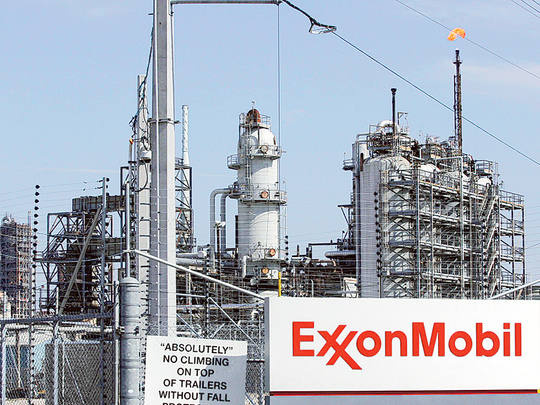
Chicago: Exxon Mobil Corp. is adjusting the way it structures shale acquisitions as the global energy giant expands in West Texas, the largest US oil-producing region.
Executives with Exxon’s shale-drilling unit, XTO Energy, are meeting with small, closely held producers in the Permian Basin to negotiate possible purchases and joint ventures, according to three people familiar with the talks. The company is expanding its use of a new strategy first deployed in the region last year that offers operators a cut of future proceeds rather than big upfront stock or cash payouts.
Stung by the 58 per cent plunge in US oil prices since June 2014, many drillers face stark choices: shut down rigs to conserve capital and wait out the bust, or surrender some independence to a deep-pocketed saviour in exchange for a shot at a future windfall. Exxon is expanding at a time when $40-a-barrel crude is crippling more-indebted companies.
“You’re going to see more pain,” Ted Harper, a senior fund manager who helps oversee $10 billion at Frost Investment Advisors LLC in Houston, said. “Some folks are going to be scrambling for alternatives.”
The XTO executives dispatched from the unit’s Fort Worth, Texas, headquarters have been working since last year to structure prospective deals to provide long-term returns rather than upfront riches, the people said.
The company is offering to cover all drilling and appraisal costs on a given parcel; in exchange, Exxon promises as much as one-third of revenue from any discoveries to its partner, with Exxon keeping the rest, the people said.
The Permian Basin is a cluster of oil fields beneath Texas and New Mexico that pumps more crude than half the nations in the Organization Of Petroleum Exporting Countries. Oil production across the region probably will rise more than 1 per cent next month to 2 million barrels a day as technological advances enable drillers to extract more crude from each well, Bloomberg Intelligence analysts Vincent Piazza and Gurpal Dosanjh said in a note.
For Exxon investors, the new deals strategy provides an added bonus: because the company isn’t using stockpiled common shares to fund the transactions, there’s zero dilution to individuals’ portfolios.
After acquiring XTO in 2010 to capture that company’s shale expertise, Exxon relied on the traditional corporate-buyout strategy to expand its holdings. One month after closing the XTO deal, Exxon paid $695 million (Dh2.55 billion) for Haynesville Shale driller Ellora Energy Inc. The following year, it paid a total of $1.69 billion for Phillips Resources Inc. and TWP Inc., closely held Marcellus Shale explorers.
Spokespersons for XTO and Exxon’s corporate headquarters declined to comment on any possible deal talks.
“We are always on the lookout for opportunities to enhance shareholder value,” said Alan Jeffers, a spokesperson for Exxon.
Chairman and CEO Rex Tillerson disclosed plans in March to double crude output from the Permian and other US shale fields during the next three years even as crumbling energy prices gut drilling budgets across the industry.
Exxon bought drilling rights or funded partnerships in five Permian Basin transactions during the past 20 months. As a result, Exxon now controls drilling rights to 1.5 million acres in the Permian region, more than twice the size of its holdings in Iraq or the UK sector of the North Sea.
Endeavor Energy Resources LP, a Permian oil producer controlled by Texas wildcatter Autry Stephens, was one of the first to accept Exxon’s terms before the downturn even hit. In a deal announced in February 2014, Exxon pledged to fund exploration of some Endeavor properties in two Texas counties in exchange for “substantial operating equity” across a 34,000-acre tract, an area 40 times the size of New York City’s Central Park.
Outside the Exxon venture, Texas-based Endeavor has reduced drilling activity in response to the collapse in crude prices. The company has three rigs in operation, “way, way down” from the nine it had under contract last year, Castello said.
The US contribution to Exxon’s supply has been rising since Tillerson signaled a new focus on shale with the $35 billion acquisition of XTO. US wells accounted for 22 per cent of Exxon’s crude output in 2014, up from 15 per cent in 2008. In addition to the Permian, Exxon is expanding activity in North Dakota and Oklahoma to lift output.












